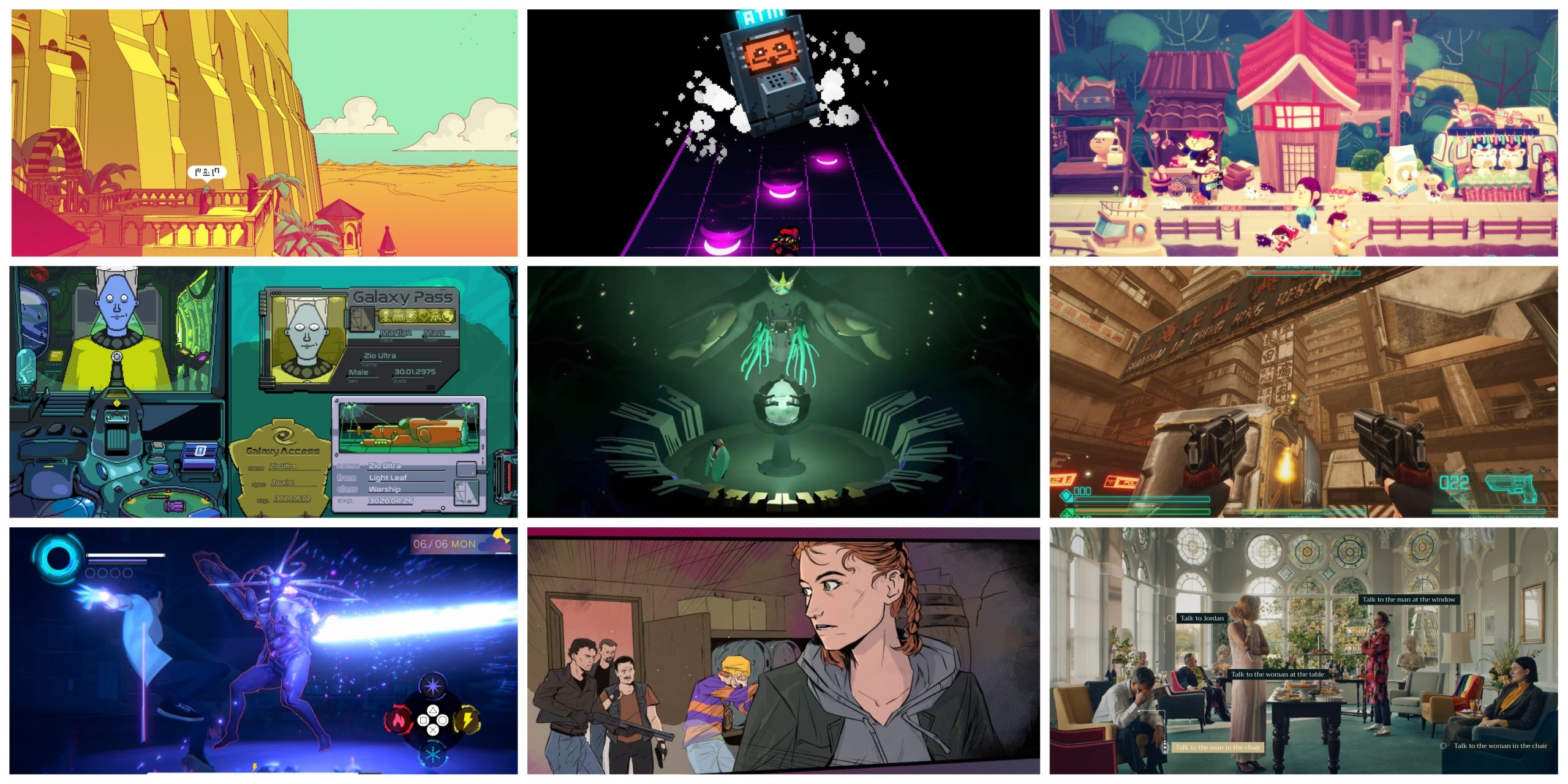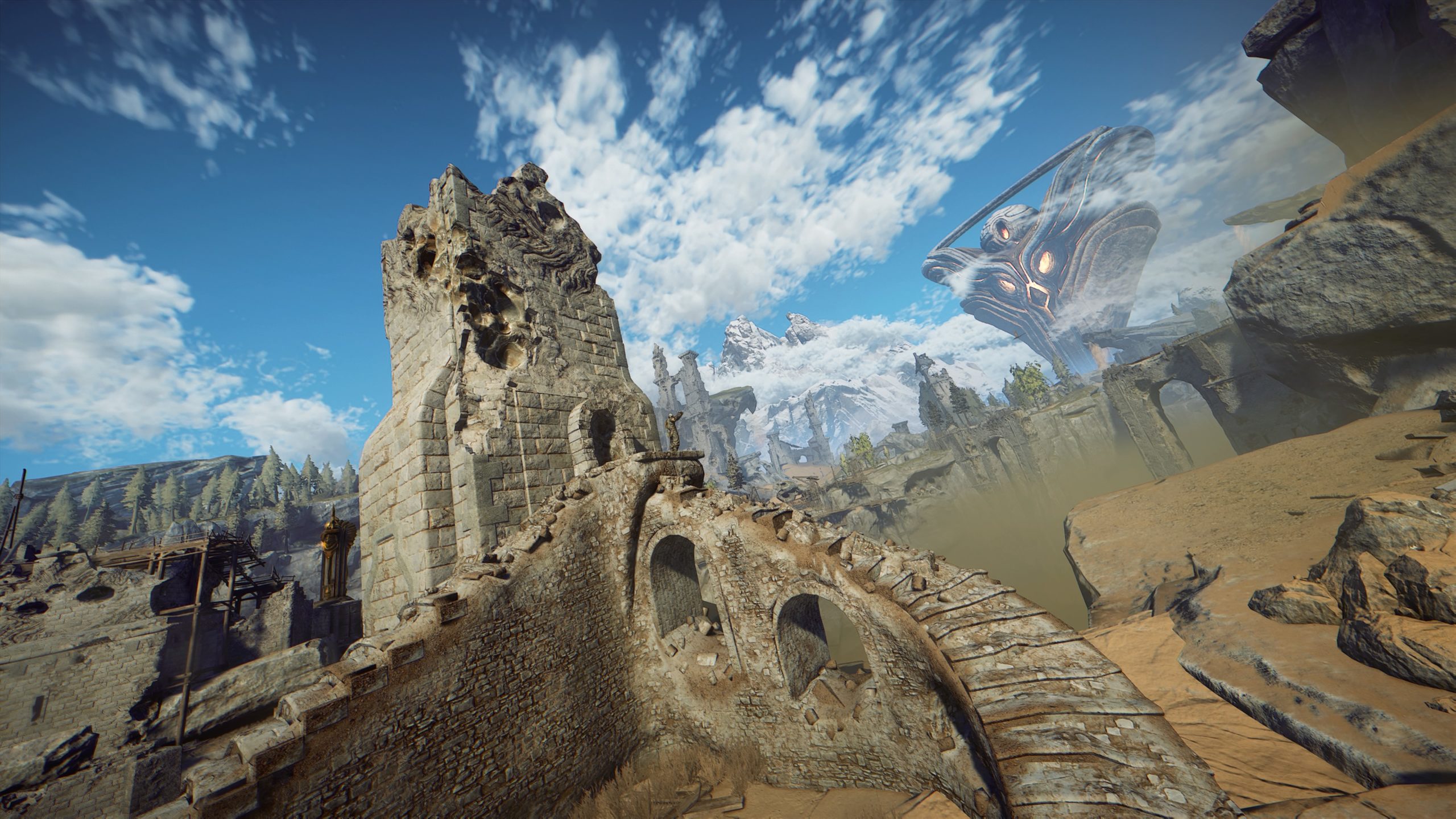Atomic Heart Review (PC) – More Fission Than Fusion
It’s been 5 years since Atomic Heart’s announcement trailer set our minds racing with excitement over this alternate-history take of Soviet Russia. 5 years is a helluva long time and Atomic Heart feels like an entirely different prospect from the initial reactions and comparisons.
The first major project of indie developer Mundfish, it’s a bold and ambitious title that elicits a wondrous reaction with its world and atmosphere, but melts down in almost every other facet. From BioShock, to Dishonoured, to Wolfenstein, it’s influences are clear across the board, yet it never commits to any particular direction, leaving it short of the nuclear output it promises.
Yet there’s fun to be had and wonderment to be discovered within this confusing quantum package. Let’s jump in and dissect this split heart.
Cross Your Heart, Comrade
Atomic Heart takes place in 1955, only not the 1955 as we’ve been taught in schools. Following the Great War, the Soviet Union gathered up the greatest scientific minds and discovered Neuro-Polymers, a massive breakthrough in technology across almost all sectors of life. Transport, agriculture, weaponry and technology alike have been advanced at almost inconceivable speed.
Which leads to the game’s events. Atomic Heart opens with a parade of epic proportions as swathes of robotic technological advancement is boastfully displayed. Our character, Agent P-3, is a former military man now under the direct order of the head of the system. With further advancement merely days away from launch, you’ll get to bask in the glistening aura of this new-found Soviet utopia.
Kollective 2.0 is launching, aiming to transfer all activity into a single hivemind that will embrace not just Russian peoples, but everyone across the globe. Now if you know your history, you’ll instantly recognise that the Russian government, as well as those of basically every other nation, may have some skepticism about this.
Naturally, the launch goes as smoothly as a gruffly spoken “niet”, with the robots being controlled by the system now acting hostile, attacking any and all humans within their vicinity.
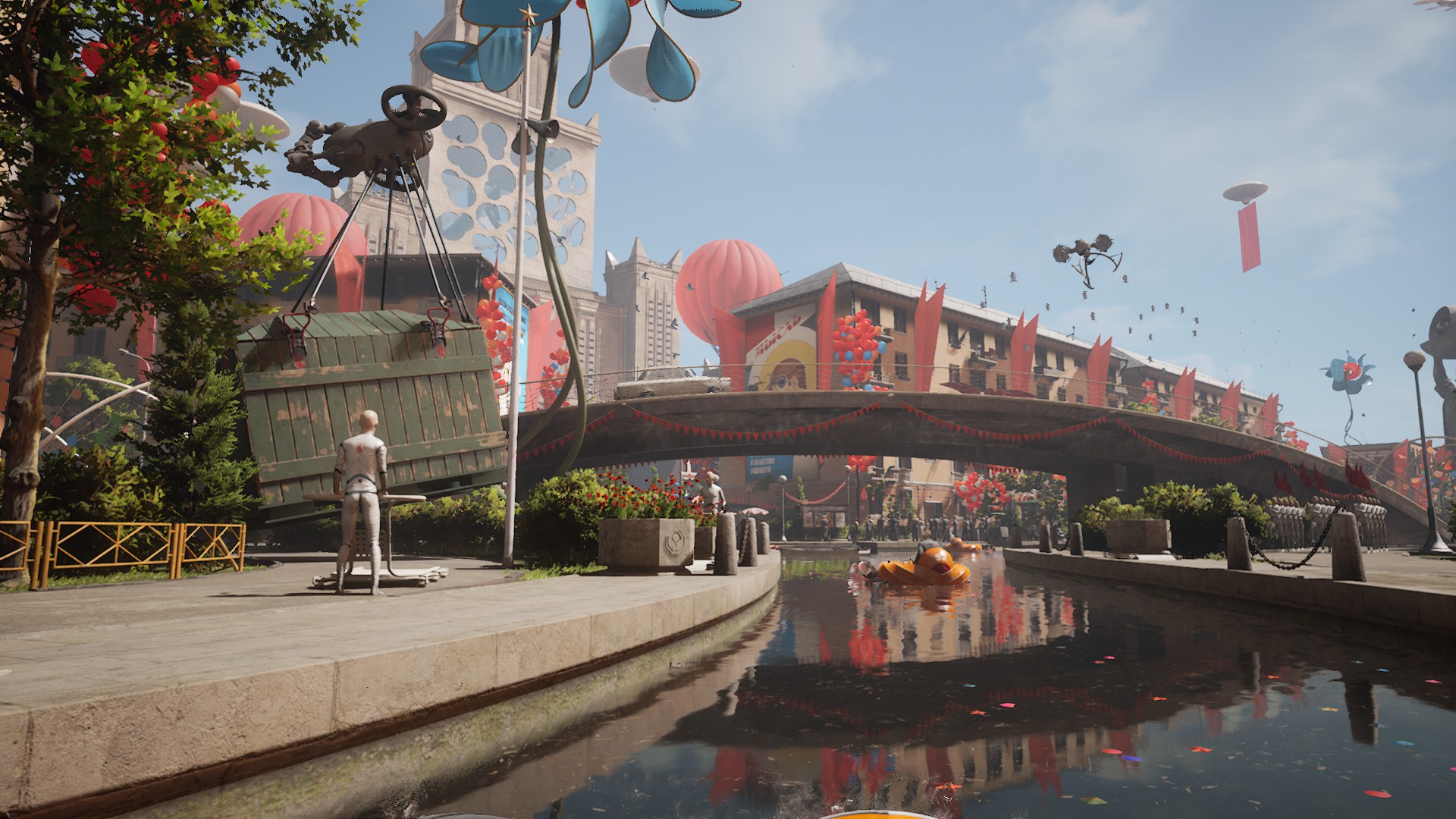
Embrace The Motherland
Starting with the good, Atomic Heart’s sense of place and the depiction of this technologically revolutionised Russia is stunning. The architectural layout of buildings fits the 1950s superbly while conjoining this with the social uptick of the newly acquired advancements. Grandiose structures litter the map and the mix of futuristic sci-fi with grounded realism is fantastically realised.
Strolling through Atomic Heart’s landscapes, stopping to take in the skyboxes and venturing into its underground complexes felt supremely compelling. Everything about this world looks and feels enticing, beautiful and disquieting all at once. Massive props needs to go to the concept artists and graphic designers at Mundfish for realising this vision so effectively.
Now, the less complimentary part. Like a lavishly decorated but horrifically underbaked and grossly-tasting cake, Atomic Heart’s narrative is bland to digest. P-3 as a character is largely superficial and falls into the usual jarhead soldier trope. The primary cast are predictable and the larger threads that unfold are so clearly signposted before the supposed reveals they might as well have a nuclear-powered neon sign above them.
There are some interesting plot-threads at the start but they feel under-utilised. Your charismatic glove Char-les can deliver the odd quippy bit of humour, but so much of the story fails to really take advantage of the amazing worldbuilding. My favourite incursions of story were usually through the computer logs and pocketwatch audio clips, which flesh out more of the world itself than the supposedly urgent current story.
While it’s by the numbers and predictable, there is at least a cohesive story present. P-3, to his minor credit, does go through some development, but despite it’s name, Atomic Heart is disappointingly lacking in cardiovascular ties.
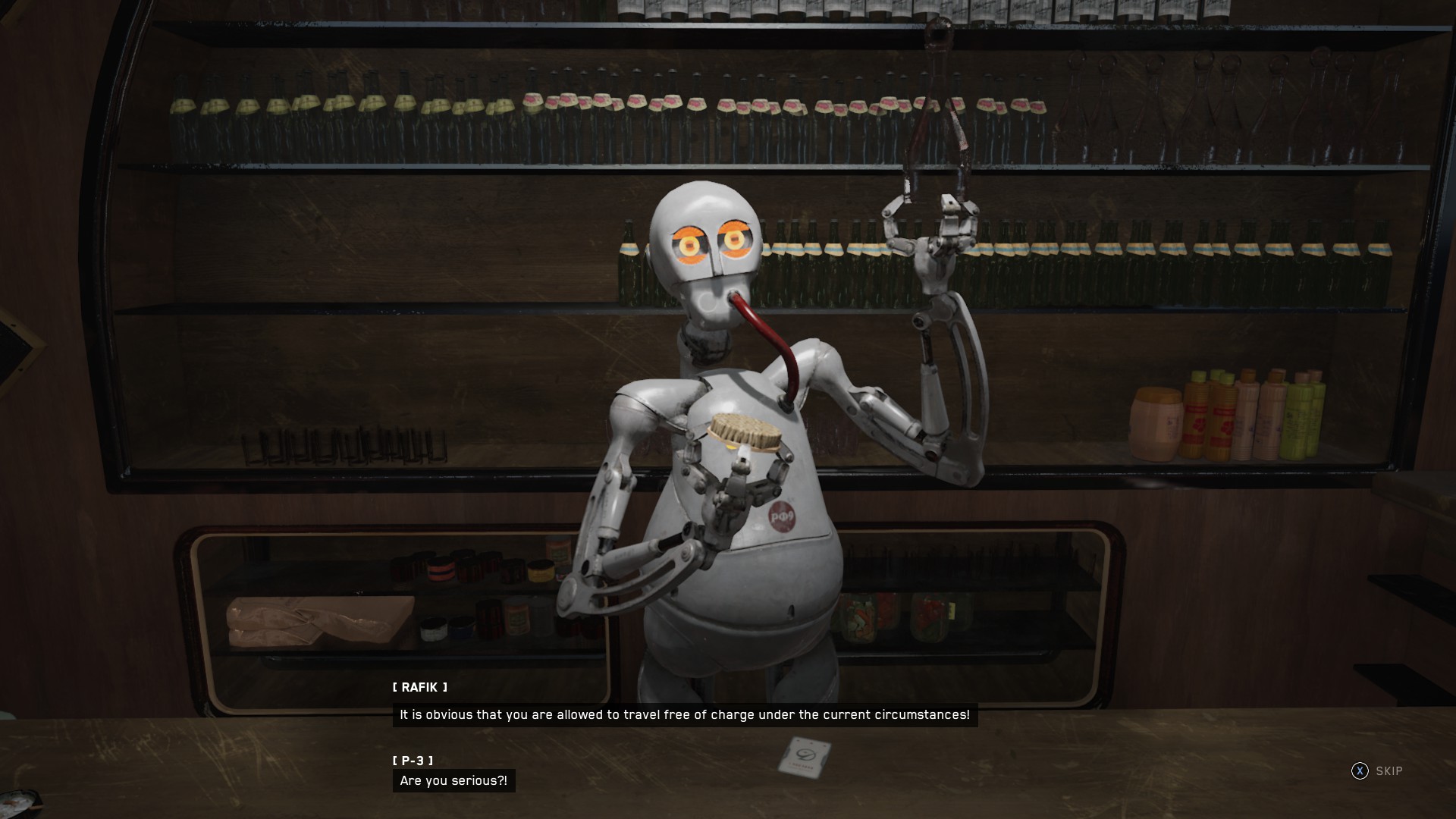
Khrush(chev) Them
Atomic Heart’s core systems are equally as split as the atoms fired into the Hadron Collider. The original trailer suggested a more stealth orientated, slightly horror-themed adventure, akin to the android sequences in Alien: Isolation. It isn’t. With the introduction of the glove and various weapons, it started to take on a BioShock feel. It isn’t that either. More recently, the bombastic, combat-heavy trailers alluded to a frenetic shooter design, along the lines of Wolfenstein or Doom. Ain’t that, neither.
The reality is a hodge-podge reaction of all 3 of those philosophies. Let’s start with combat first. P-3 can acquire and build up to 12 different weapons of three main types: regular firearms (pistols, rifles), special weapons (bazooka, energy rifles) and melee equipment. Additionally, your handy left arm glove, Char-les, has various abilities that can be used in battle, from freezing or electrocuting enemies to putting up a shield or levitating whole groups with mass telekinesis.
Melee combat can feel satisfying sometimes as you smash into metal and steel. It falls apart in larger engagements where it’s exceptionally easy to get stun-locked, caught in an unescapable corner or against enemies with more agility. Annoyingly, one enemy type can only be damaged by melee weapons yet can bounce around more than a toddler on a spacehopper, making the fights a frustrating war of attrition.
Due to the issues of melee combat, you’ll likely find yourself falling back on ranged weapons to slaughter your way through the animatronic hordes. Gunplay feels solid if unspectacular. The shotgun will be your best friend and once upgraded some weapons have powerful alternate attacks to improve your combat abilities. It all works well and the various enemy types mean you’ll need to swap frequently to efficiently take down the threats you’ll come across.
The combat glove’s powers allows you to take advantage of elemental weaknesses some robots or mutants are prone to. For example, zapping a particularly bothersome aerial drone before blasting it into more pieces than your DIY draw has. It lacks the variety of BioShock or the utility of Dishonoured’s powers system, meaning it’s a fun addition but it doesn’t always feel like an integral element of the combat loop.
While you theoretically can use stealth to skulk up to enemies and overload them, the lack of detection meter and the fact they instantly spot you means it’s fairly useless. Aside from a couple random robots, I relied on charging in with a trusty shotgun buck as opposed to wasting time sneaking about.
Like I said before, it lacks the thoughtful tension of Alien: Isolation, the creative freedom of Dishonoured or BioShock and the combat pace of Doom or Wolfenstein to make any of its many directions truly shine. It works, it’s solid and it’s competent, but it never reaches critical mass, more a lukewarm atomic collision.
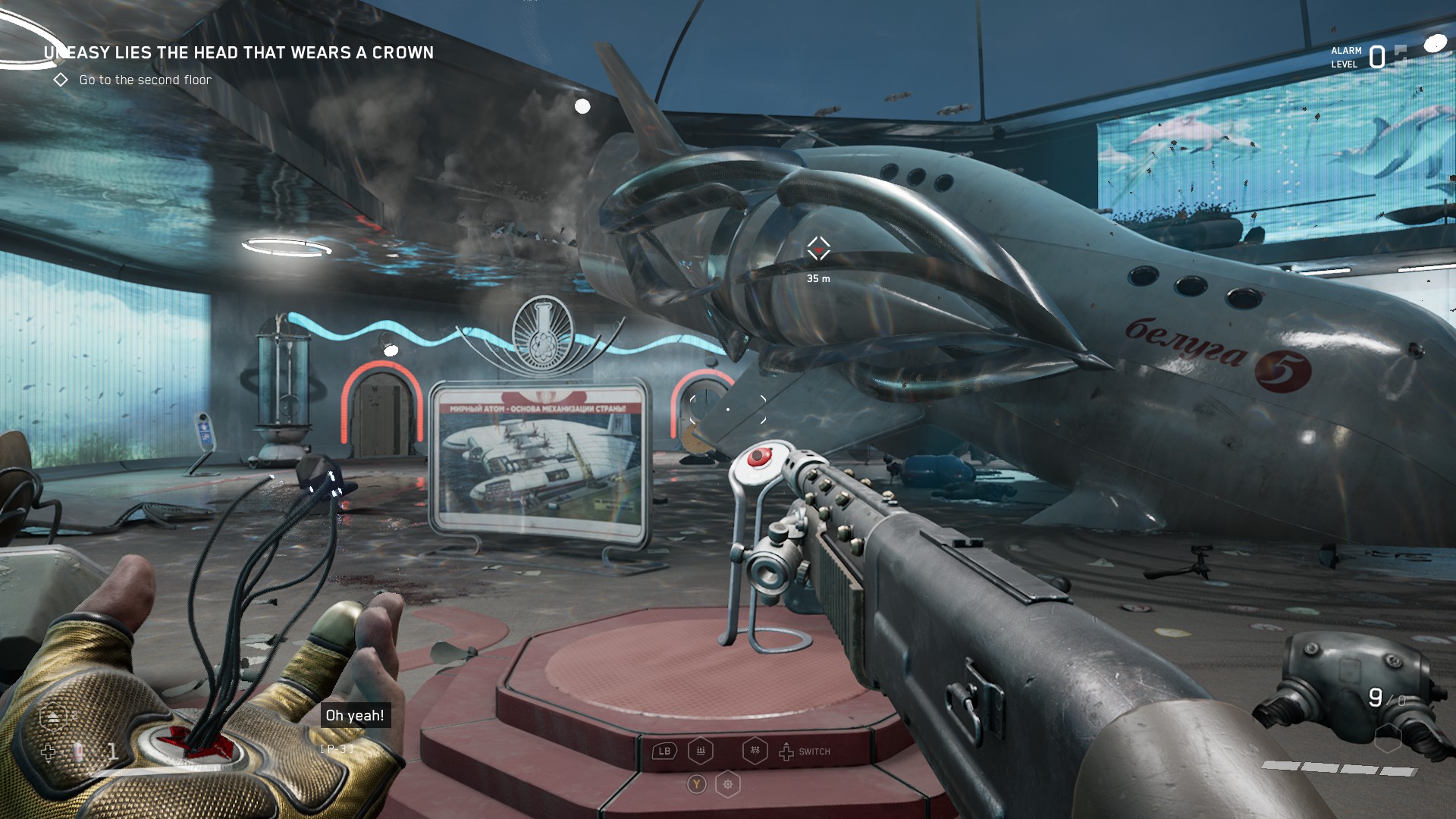
Stalin For Time
Between the combat arenas and firefights, you’ll be required to navigate P-3 around the invaded landscape, hoovering up supplies and travelling to your next objective. If, like me, you’ve entered Atomic Heart thinking it would be a semi open-world adventure with side-quests and extra activities, you’ll be sorely disappointed.
Rather, Atomic Heart is a linear experience disguised with a more open structure. The vast amount of your time is spent in underground complexes and interior spaces, particularly main quests which are predominantly set within these areas. You get the chance to stretch your legs between these tasks, where you can drive around, search random houses or complexes and choose to engage threats or avoid them.
Aside from finding resources for upgrading your glove or weapons however, there’s literally no reason to. Occasionally you’ll find a schematic for a weapon upgrade in a trunk or you can go into mini-complexes that have a particular puzzle for multiple upgrades, but the exploration is otherwise unrewarded. It felt so devoid of value that I only completed the optional first complex and ignored the rest. The basic upgrades available service perfectly fine as-is so there’s just little incentive to explore beyond what you cover naturally.
The open exploration is further hindered by the fact that robots are everywhere, meaning it’s far too common to end up in ammo-draining firefights or getting caught by the bazillionith camera stationed around. It’s far more prudent to conserve ammo and resources by just driving straight onto the next objective and avoiding any exploration at all, which is such a shame given the amazing work on display with the world-building.
That there’s no real side-content aside from meaningless tasks given to you by the bodies of people killed in the robot uprising really doesn’t help. They’re not tracked, there’s no reward and no log for them, so they’re utterly pointless. Collectible logs are intriguing in their own right but aren’t enough to draw you out of the malaise either. Doesn’t help that the trackers for achievements and trophies are completely bugged too.
Consequently, Atomic Heart feels as lifeless as the animatronic frames roaming around you. There’s so much awesome scenery and architecture to explore, but no reward for doing so.
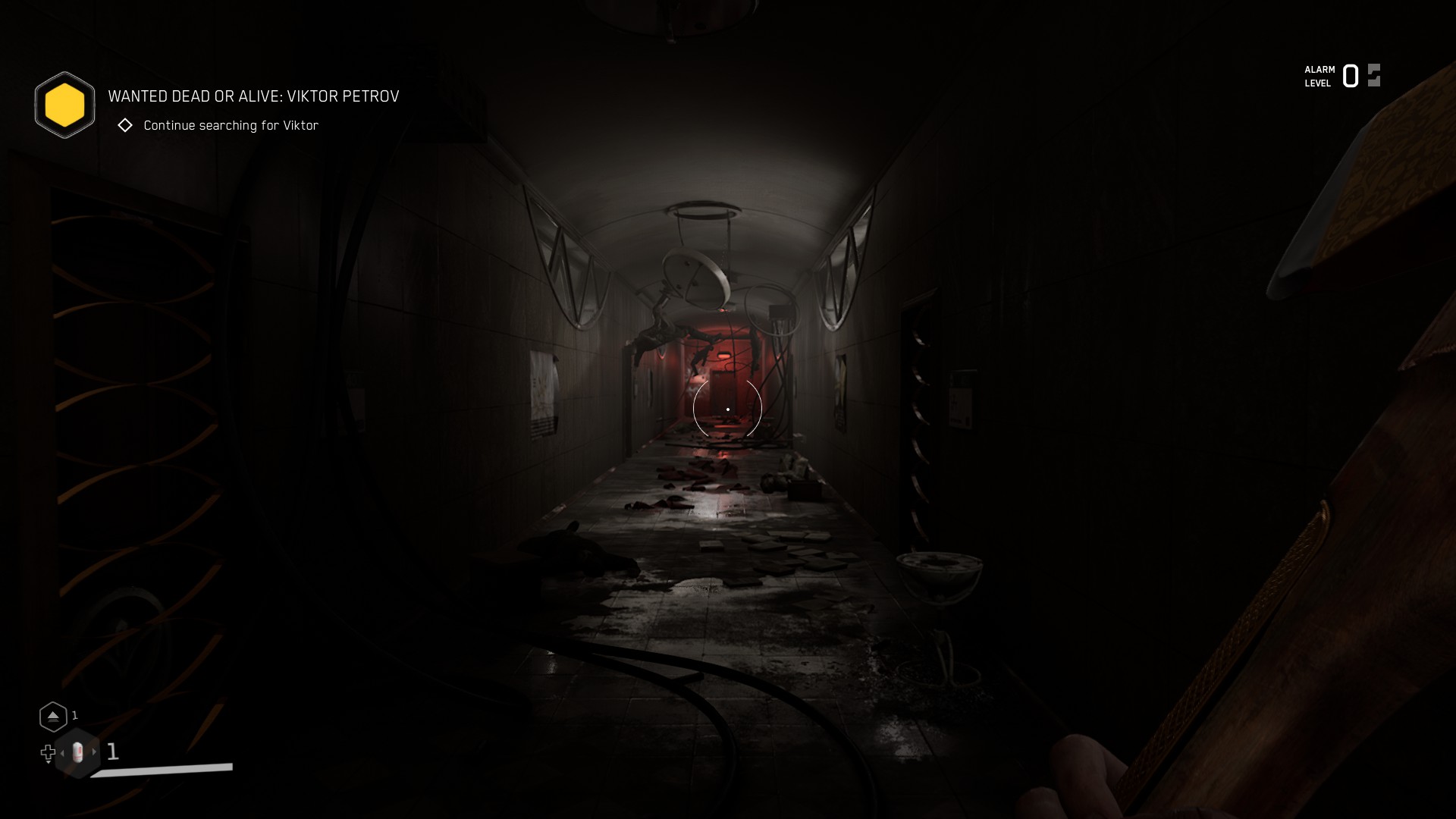
Why, Robot
Thanks to the android revolution currently in progress, there’s a wide array of haywire machinery to handle on your journey. Not only that, but the scientist’s experiments with Neuro-Polymers on botanical material has led to some rather unfortunate mutated creatures.
Standard bots range from humanoid figures who’ll dropkick you to kingdom come, to black-suited tyrants with a laser for a face. Aerial varieties and cameras can signal for alarms, being infinitely deployed to regenerate destroyed bots, while grounded machines can fire artillery, launch saws or trigger swirling claws of death.
Mutants are a bit less impressive, with generic infected ripped straight from The Last of Us, though one variation with pulsating, blood-flowing red flesh looks grotesquely awesome. The idea is you’re supposed to adapt your playstyle and arsenal to face the various threats (which you have to owing to low ammo counts), but as mentioned before, the shotgun will carry you through most of the game, which is a bit disappointing.
Boss battles are a regular occurrence and they range from great to awful. Melee-only sponge mutants are a slog to battle through, while a giant rolling snowman machine that fires rockets and bull-charges you is fun as Hell. Machine bosses can generally be overcome a little too easy with the rocket launcher, owing to the fact it can stun-lock them, but the fights themselves are otherwise fairly well designed.
It’s unfortunate that due to the focus on robotic enemies primarily, the lack of visual variety does start to take a toll past about 10 hours or so, but Atomic Heart does offer a decent plethora of enemy types, even if they start to blend together a bit too effectively.
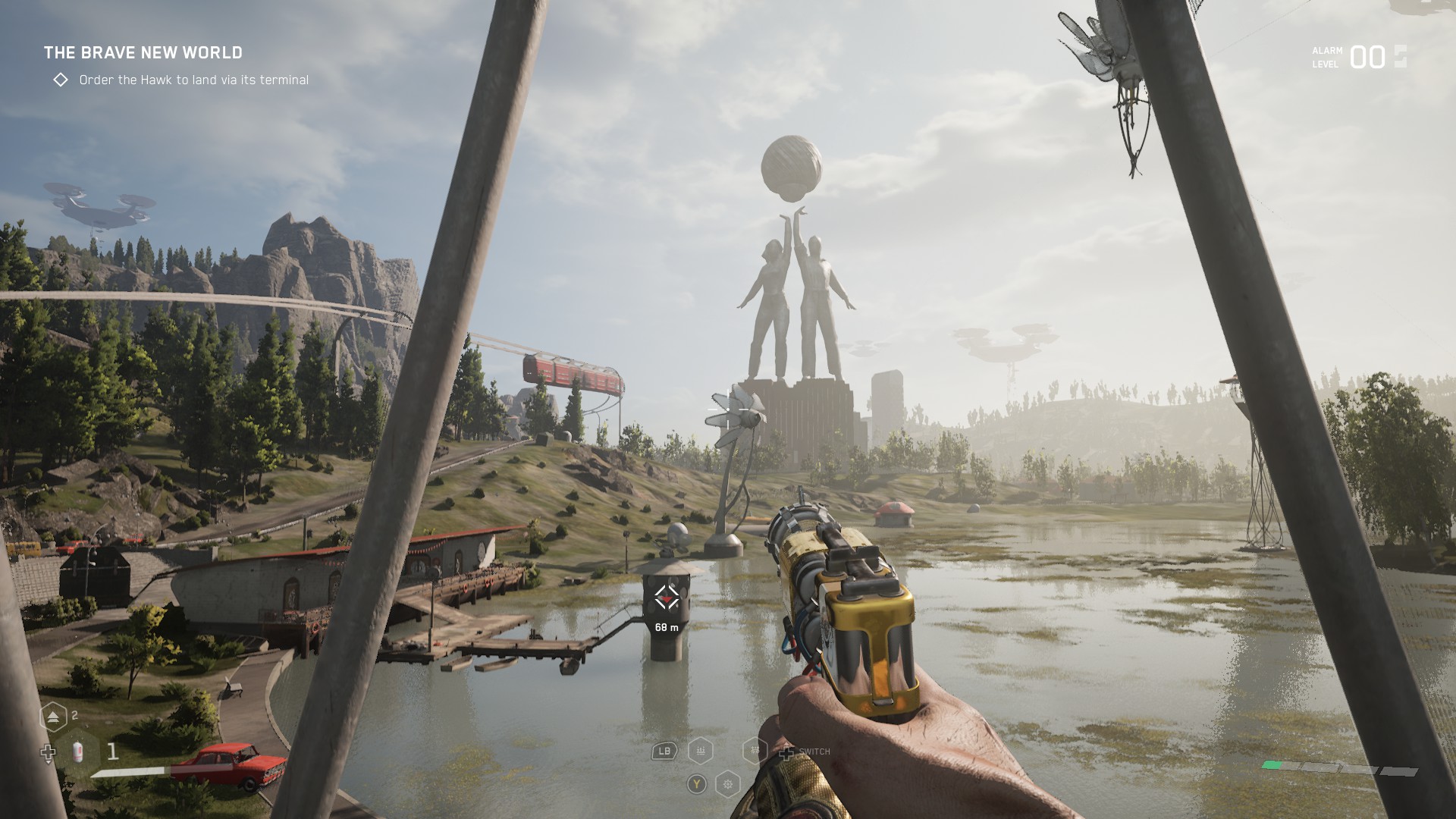
Tune Up The Kalash
Scouring defeated enemies and searching houses using your glove for materials and resources is essential once the shooting stops. Atomic Heart tries to streamline this using your glove as you can simply hold the trigger button to absorb the items from context sensitive environmental cubby holes. While it’s made simple, it can be fiddly thanks to the awkward detection at times and some items simply refusing to budge for no reason.
At select stations you can then use your various parts accrued to craft new weapons, upgrade existing ones and improve your glove’s power capabilities. Upgrades to weapons feel significant and the difference between a basic rifle and a fully spruced one is substantial. Resources are farmed out liberally but everything requires a fair chunk to fully upgrade, so it provides a nice balance of consistently improving without becoming too overpowered too rapidly.
Char-les’ upgrades surprisingly feel less impactful. You’d think a fully boosted electric shock would melt most machines but you’d be very much incorrect, as I was. Part of the reason I think the combat flow isn’t better than decent is down to this deficiency I’m pretty sure. Freezing enemies in place or having a Polymer shield just doesn’t feel that effective or satisfying in Atomic Heart, which is a mechanical issue that upgrades never really overcome.
The dozens of upgrades available for each weapon make it a great system overall, but it doesn’t really make up for the inherent lack of flow in the combat system itself.

Stunning Reaction
As much as I had a number of problems with Atomic Heart’s story, gameplay and structure, I absolutely adore it’s graphical presentation and the creativity of its artistic direction. Atomic Heart has such a wonderfully realised world, from the Soviet inspired bunkers to socialistic households, everything just looks like it belongs.
Machines range from the uncannily creepy humanoid types to wild contraptions that thematically make so much sense within the role they serve in this alternate history society. I had so many moments of just taking in the phenomenal architectural work like the solar array complex or the first time I laid eyes on the Russian monuments developed by the machines.
Mick Gordon also delivers another expected stellar soundtrack to accompany the whole affair. It’s superb audio and musical score do so much to sell the atmosphere of this sci-fi universe.
However, much of this comes at a significant cost. At times, Atomic Heart’s reactor nigh-on enters meltdown state with its performance issues and glitches.
I had P-3’s character model hilariously separate from the camera during a cutscene, meaning I just saw his arse instead of what was happening in front of me. Driving vehicles would often end up with me pinging into the sky and engaging in what can only be described as its best tornado impression as I 360 span back to Earth at lightspeed. A boss battle hard crashed my PC on one occasion and framerate dips are common, even when dropped from ultra to high settings.
I suspect Atomic Heart is riddled with numerous other technical problems and while they never quite cause a fission reaction, it’ll likely have some close calls.
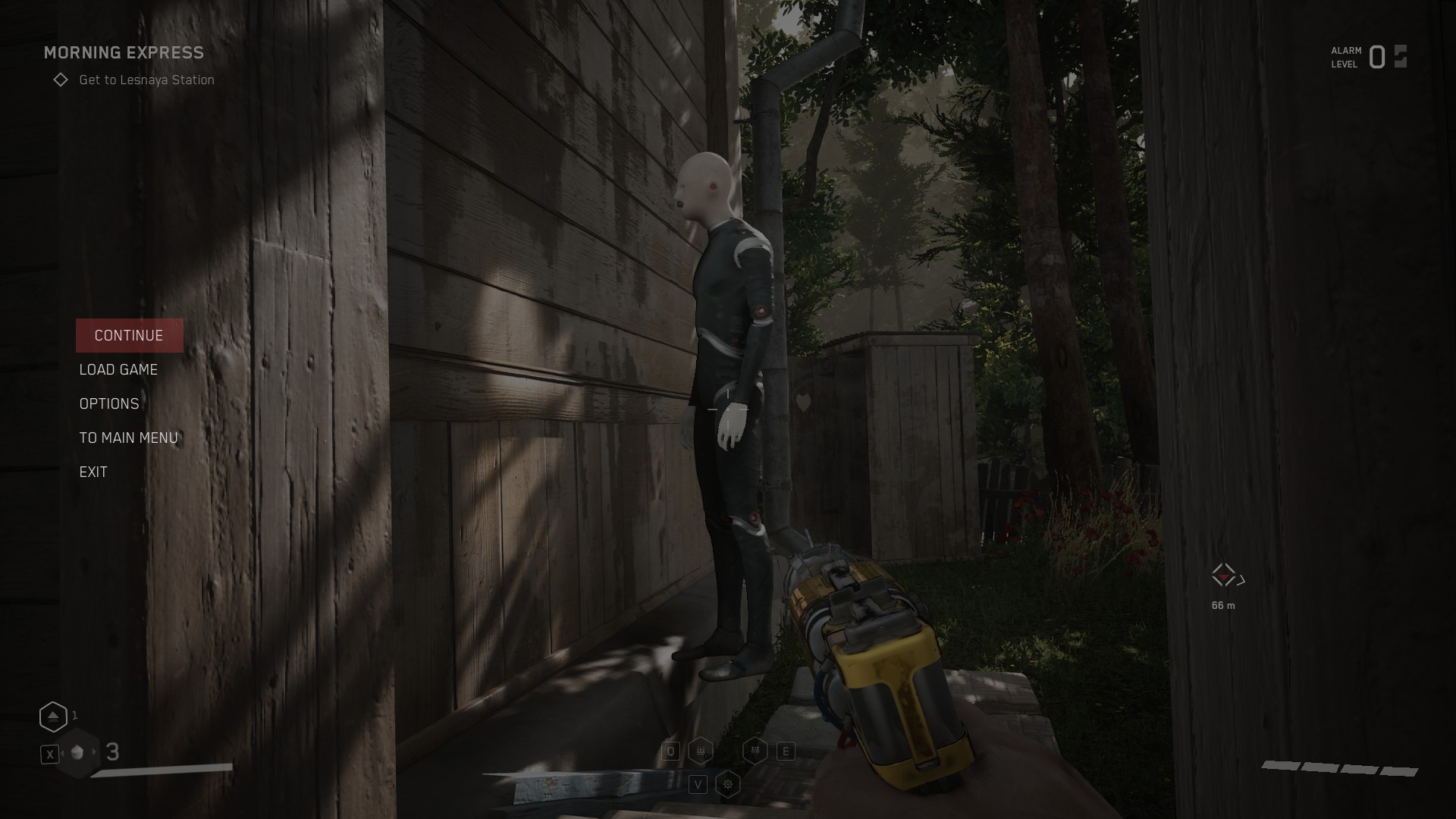
Meltdown Averted, Just
I could go on about the numerous small problems I have with Atomic Heart: the virtually useless map system, the poor implementation of alarm gauges, getting constantly caught on rogue geometry in a battle causing death. However, these minor issues I could actually look past and forgive, owing to the fact this is a new developer working on a hugely ambitious vision.
What I struggled to forgive, and what stifled so much of my enthusiasm for Atomic Heart, is that by my 10th hour I just wasn’t interested anymore. I just wasn’t having much fun, neither with the combat, nor the story, nor the gameplay structure. Atomic Heart is really a corridor first-person shooter with some open areas to laboriously run or drive across.
There are so many individual elements I want to love about this game – the setting is great, the combat fundamentals are solid, the graphics are gorgeous – but none of it coalesces to reach the potential of the vision. It’s a nuclear reactor that’s been overloaded by too much material and a lack of cooling control.
Having said all of that, it’s a decent video game that comes with major caveats. I can already imagine the potential for a sequel to develop even more of this stunning universe, hopefully with a more focused gameplay direction, more nuanced story and better technical performance.
Atomic Heart is a solid yet over-indulgent first entry from a developer that maybe had more ideas than it could manage at once. The individual atoms and particles have wonderful potential, but their quantum connection to each other feels wholly missing thanks to their competing directions. I have hope a sequel could deliver on the fantastic premise and stellar world-building, but just like nuclear fusion, it’s an optimistic dream rather than an exciting current reality.

Atomic Heart is available now on PC (review platform), PlayStation 5, PlayStation 4, Xbox Series S|X and Xbox One.
Developer: Mundfish
Publisher: Focus Entertainment
Disclaimer: In order to complete this review, we were provided with a promotional copy of the game. For our full review policy, please go here.
If you enjoyed this article or any more of our content, please consider our Patreon.
Make sure to follow Finger Guns on our social channels –Twitter, Facebook, Twitch, Spotify or Apple Podcasts – to keep up to date on our news, reviews and features.

